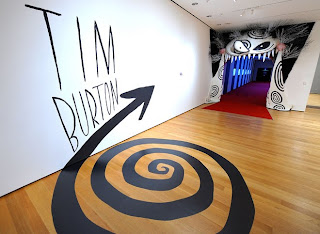December: Minneapolis, MN (Episode #1)
So it seems I have been terribly remiss. Over the past few months, I’ve had so much to blog about but I just haven’t taken the time to sit down and do it. So here are a few organically connected episodes…
Of all the work we saw, between the Walker and The Minneapolis Institute of Arts, I was most struck by Michael Kareken’s exhibition “Scrap.”
From the adjoining gallery, Kareken’s enormous painting Scrap Bottles appeared to be purely abstract. However as I got closer, shapes then bottles became distinguishable in the enormous swirling color field. Standing in front of the work, I remember being overwhelmed by its scale (188”x168”) and compositional weight. The bottles near the bottom of the painting were exaggerated – larger than life, while those near the top were smaller and less distinct. This size gradation created the illusion of depth and gave the impression that I was looking up at the refuse instead of out and over it. With no external point of reference, it was impossible to gauge the height or breadth of the heap depicted by the painting. Was it a foreboding mountain or a mound that could eventually be leveled? Regardless, the chaotic lines created by the haphazardly piled bottles made the whole image feel unstable. The recyclables seemed to be on the verge of spilling out of the picture plane – threatening to drown anyone who dared to loiter for too long.
Strangely, despite this constant menace, there was also something disarming about the painting – an element running through the entire body of work. The painting was undeniably beautiful. Each of the bottles was so carefully represented. In the act of rendering them, the artist undoubtedly gave them much more time and attention than their previous owners had. With his eloquent paint handling and subtly nuanced color, Kareken seemed to be asking the viewer to pause for a second and acknowledge the overlooked frappuccino bottle, the salad dressing jar or the olive oil jug. Having out lived their utilitarian purposes, when handled so delicately, these empty containers became objects or forms to consider.
Could the bottles, apart from their contents, be valuable or even beautiful? Could the efficient system that produced them really be so bad? Maybe the menace comes from the way we have chosen to handle them – the excess of them?
I think I was so taken by Kareken’s work because his critique was complex. His treatment of the subject matter, made the work more than just simple environmentalist propaganda. Kareken didn’t hop on the “go green” bandwagon – the fad that has brought us recyclable packaging, carbon credits or reusable grocery store bags nor did he blatantly denounce our ‘gluttonous consumer culture.’ Instead he presented a quiet meditation on the recycling process – one that yields more questions than answers: Will it be enough or will we still be drowned in our good intentioned efforts? Though an inherently restorative process, does it still involve a kind of violence? If so, is it worth the violence?




Comments
Post a Comment